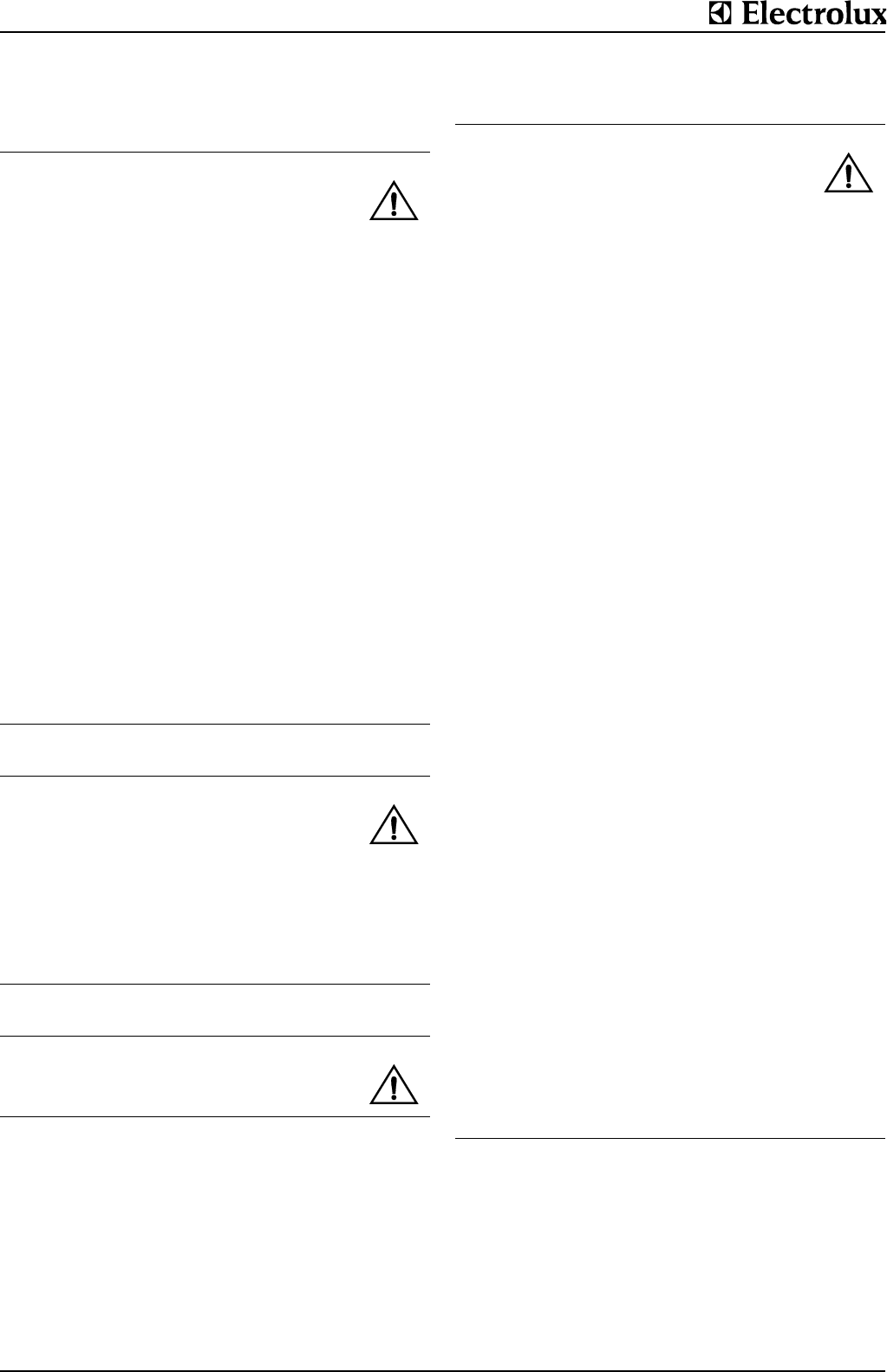
GENERAL INFORMATION
62.9679.01_UL Seite 3
I . GENERAL INFORMATION
1. INSTRUCTIONS FOR SAFETY AND USE
1.1 INSTALLATION AND INITIAL OPERATION
1.2 OPERATOR'S OBLIGATIONS
1.3 USE AS PRESCRIBED
1.4 SAFETY-CONSCIOUS WORKING
S The installation, adjustment and initial opera-
tion of the appliance must be carried out
according to the manufacturer's instructions
and may only be done by an authorised spe-
cialist.
S Installations for the supply of electricity and
gas must be carried out by approved special-
ists in compliance with specific national and
local regulations. They bear the responsibil-
ity.
S The installation must conform with local
codes, or in the absence of local codes, with
the National Fuel Gas Code, ANSI
Z223.1/NFPA 54, or the Natural Gas and
Propane Installation Code, CSA B1 49.1.
S The appliance and its individual shutoff valve
must be disconnected from the gas supply
piping system during any pressure testing of
that system at pressures in excess of 1/2 psi
(3.5 kPA).
S The appliance must be isolated from the gas
supply piping system by closing its individual
manual shutoff valve during any pressure
testing of the gas supply piiping system at
test pressures equal to or less than 1/2 psi
(3.5 kPA).
S The appliance must not be placed in
operation until the user has become familiar
with its operation. The operating instructions
and the related safety precautions must be
followed precisely. Follow strictly the
attention and warning label indications on the
appliances.
S The manager is responsible for ensuring that
all components relevant to safety are in per-
fect working order at all times. The operating
condition of these components must be
examined by an authorised specialist at least
once a year and any defects remedied if
required.
S The operator of this appliance is responsible
for total observation of the national regula-
tions concerning operating safety.
S Remain the manual for future reference.
S Closed containers (jars, cans, bottles, tubes,
etc.) must not be heated owing to the danger
of bursting and injuries.
S The trough heating must not be switched on
if there is no oil in the trough or the oil level
has fallen below the minimum. - Risk of fire.
S Food must be placed slowly in the heated
trough, to prevent the oil from bubbling over.
S Mounting a mixer tap near a fryer is prohibi-
ted. There is a great danger of explosion if
water sprays into hot oil.
S When the oil trough temperature is high and
food with a high water content is to be fried,
the hot oil may froth up and spit out. - Danger
of injury!
S Used oil has a lower ignition point and tends
to bubble up. - Danger of injury!
S Oil must not be allowed to drain into the
discharge vessel or transported before it
is cooled down fully.
S
Touching the hot cooking zones can cause
burns.
S The escape of burnable gases represents a
fire and explosion hazard. Action in the case
of a gas leak and a smell of gas:
- No smoking, no fire
- Do not operate electric switches or bells.
- Do not operate the piezo igniter
- Close gas cylinder valves and the main
gas valve on the appliance.
- Ventilate the room thoroughly
- Place the leaking gas cylinders upright in
the open with valves closed.
S The waste-gas outlets of the fryer become
hot. Avoid touching them.
S The waste-gas outlets of the fryer are not to
be covered by any objects.
S Spraying the appliance or parts of it with a
high-pressure cleaning device may cause
malfunctions and is not to be done.
S Keep the appliance area free and clear from
combustibles
S Do not obstruct the flow of combustion and
ventilation air.
S For appliances with a downpipe, the hose
should lead into a drain opening which is cov-
ered by a grating such that it cannot be
kicked or tipped, or a drain gutter should run
underneath the appliance.
S Devices on wheels set up in block configura-
tion must be checked before each start-up
whether the potential equalization is con-
nected with the neighbour equipment. The
connection may be done only by authorized
technical personnel.
S Appliances on wheels must be fastened to
the building.


















